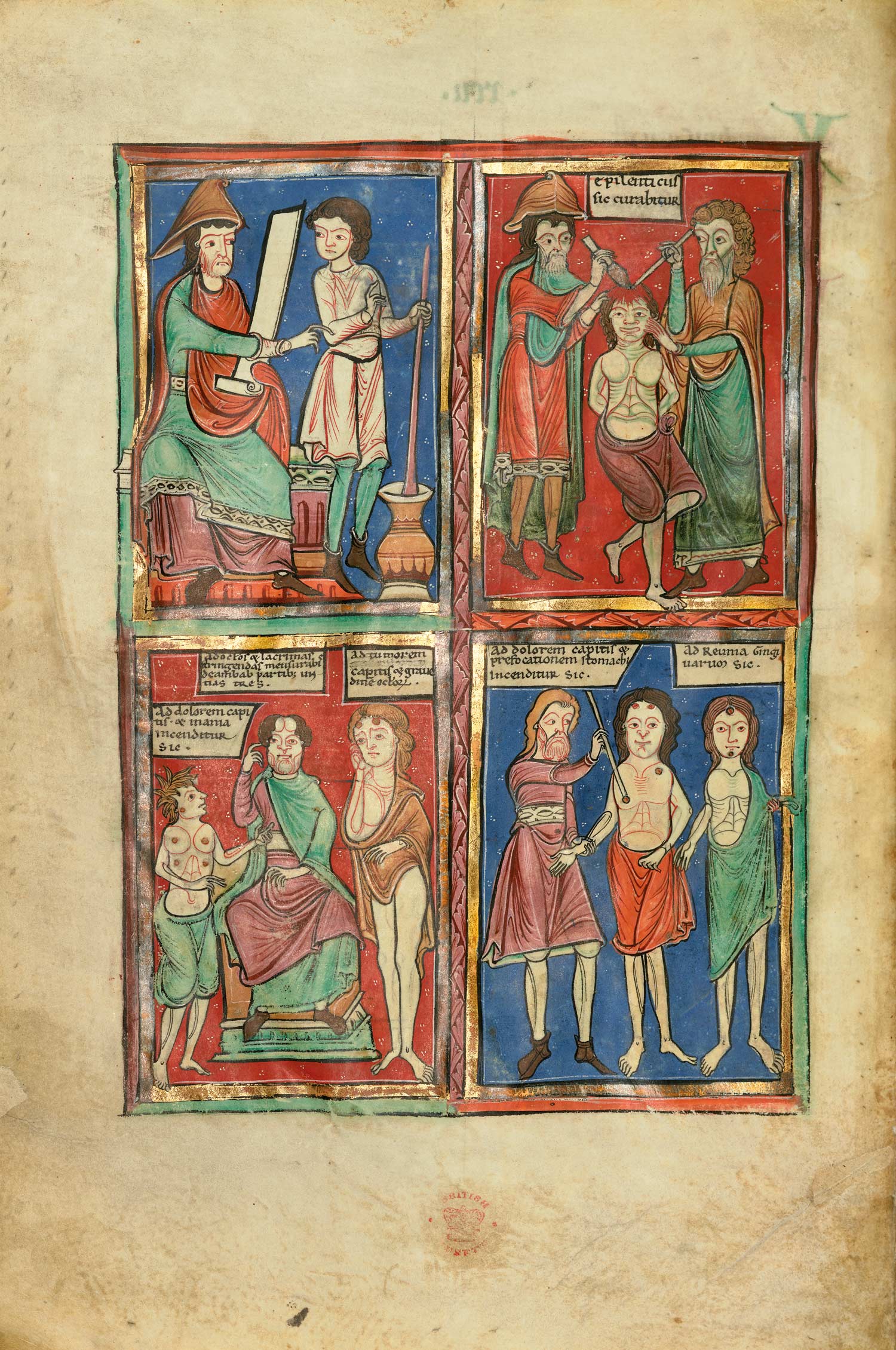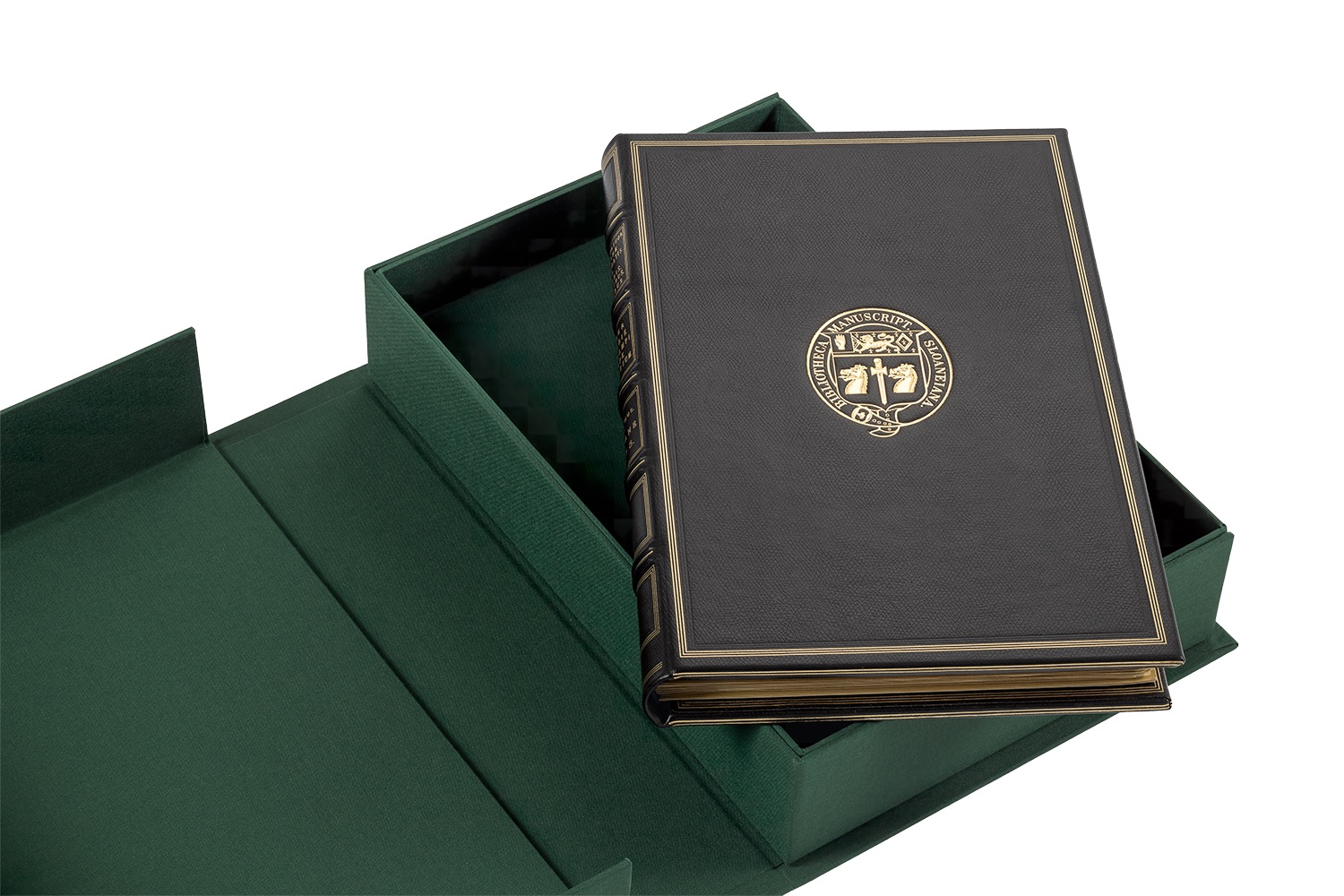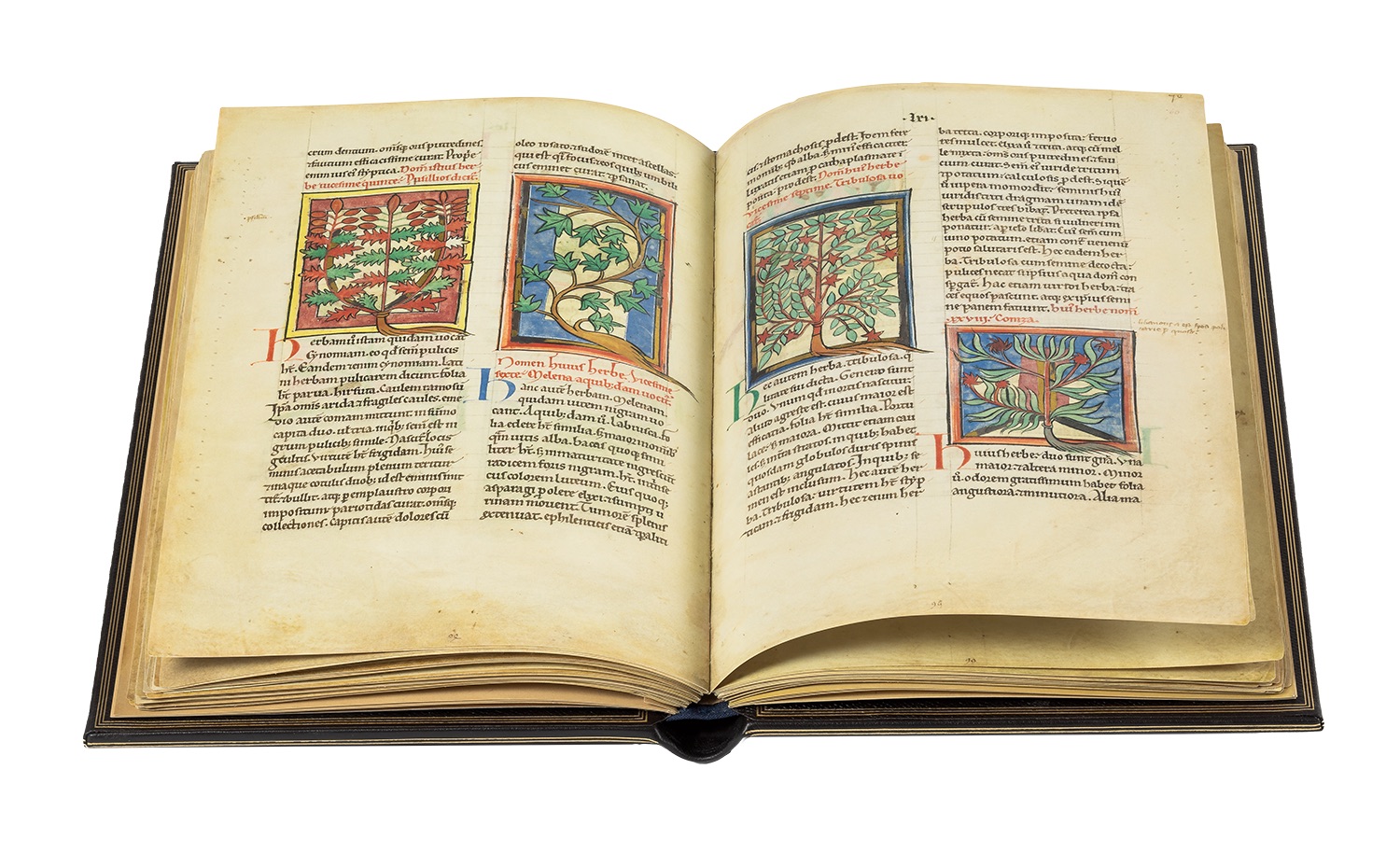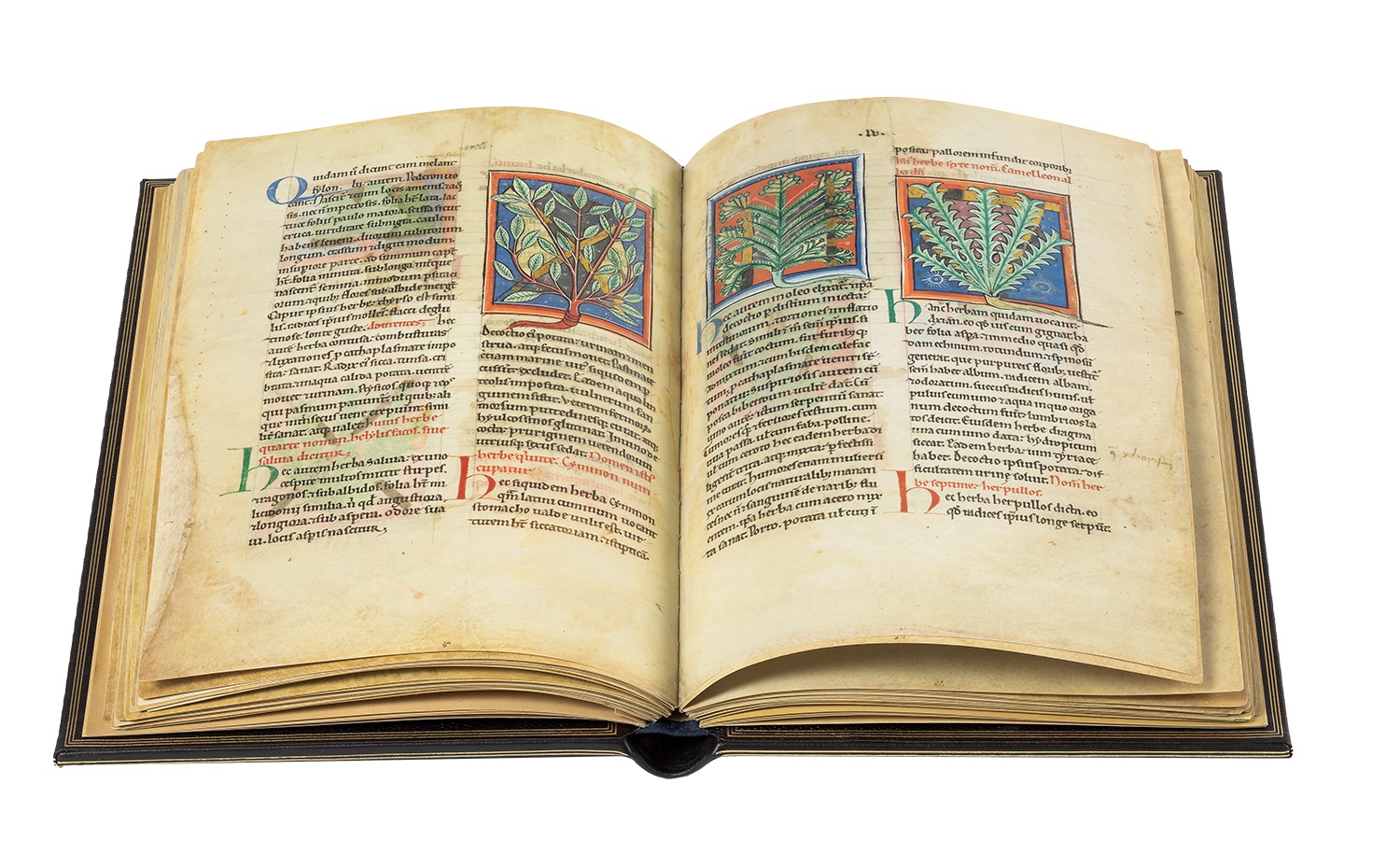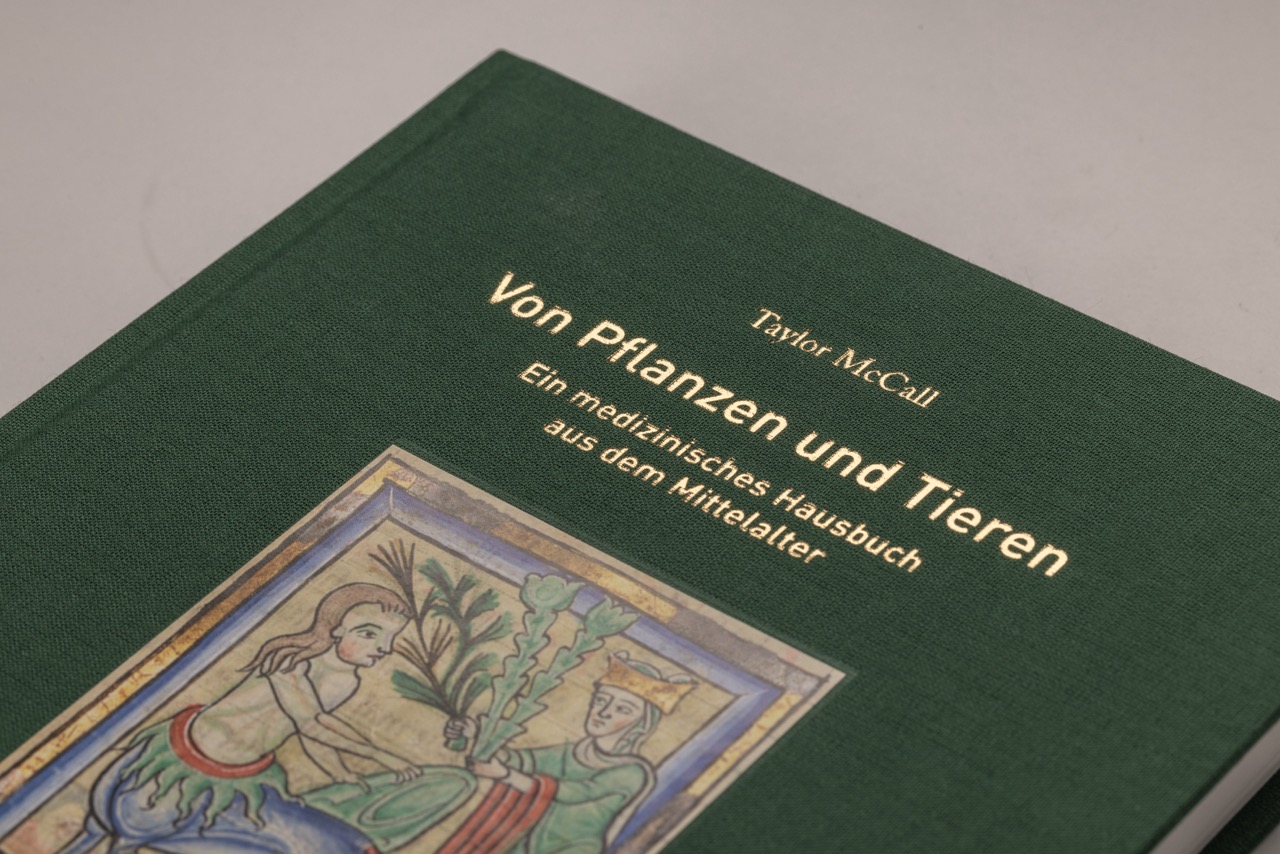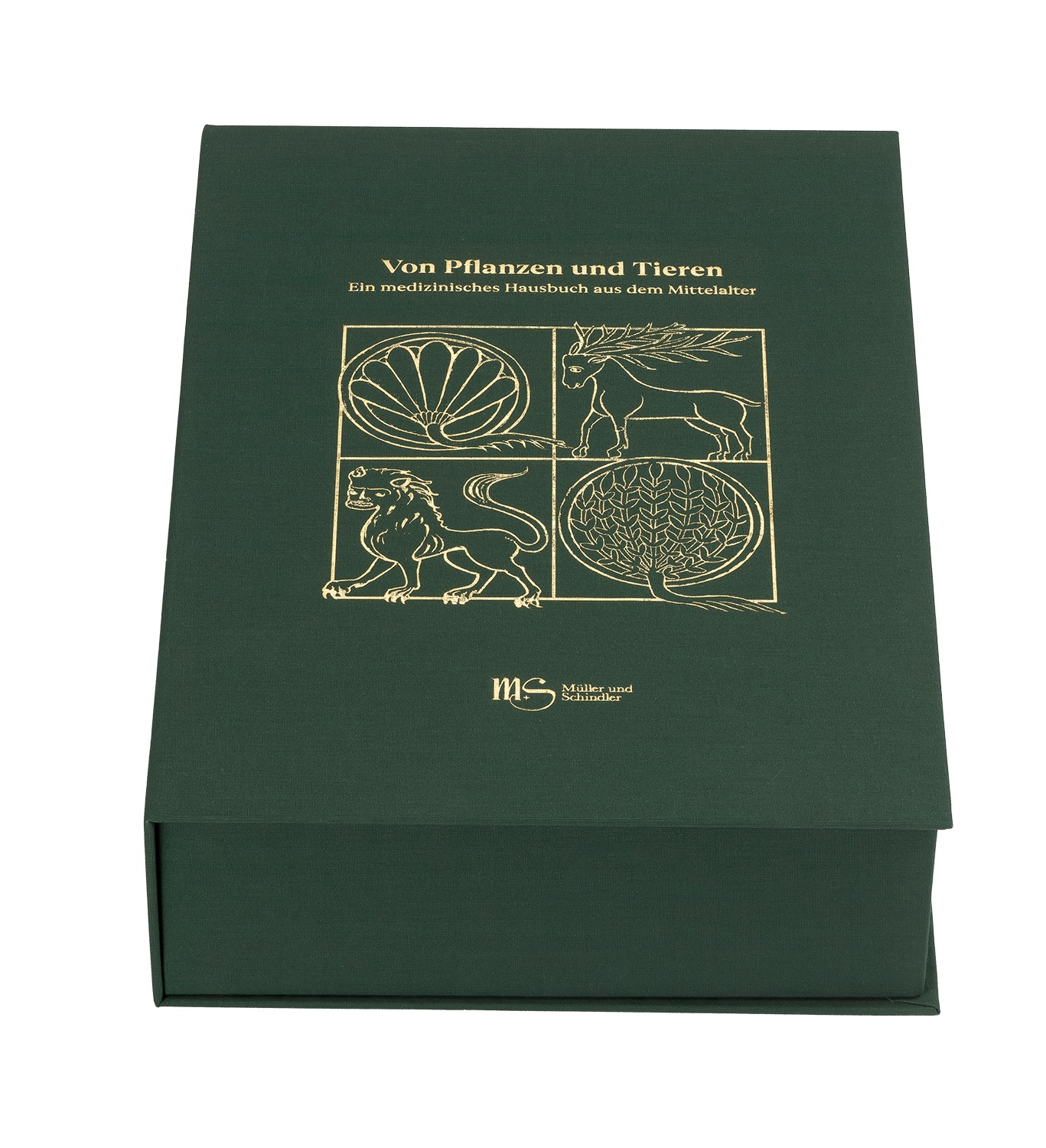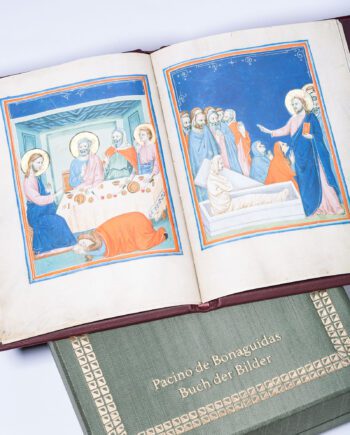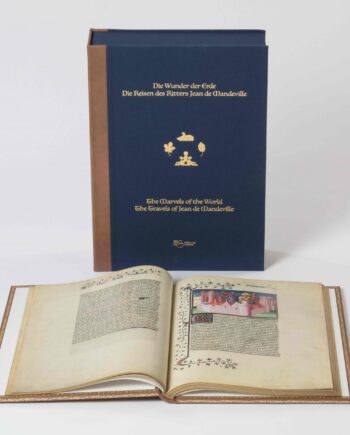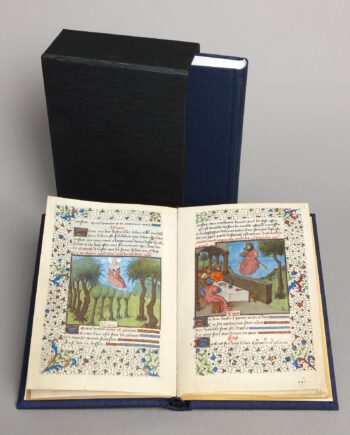Description
A splendid manuscript with exceptional content
The British Library, home to one of the greatest manuscript collections in the world, houses an artwork with a very special content: About plants and animals, a medical compendium created in Northern France or England in the late 12th century. This book captivates with its abundance of beautiful and accurately executed miniatures – more than 240 illustrations on 95 folios – which form an encyclopaedia of the knowledge of herbal medicine at the time. Based on classical scientific texts, popular medicine and other medical doctrines, such compendia were mainly used as handbooks in hospitals – which until the 13th century were generally in monasteries – for the preparation of medicines.
Monastic Medicine and Medieval Healthcare
In Christian Europe, the care of the sick was assumed by monasteries and convents up to the 12th/13th centuries; as early as the 6th century, Benedict of Nursia described it as one of the essential obligations of the clergy (‘Infirmorum cura omnia et super omnia adhibeanda est’ – ‘The care of the sick is most important of all’). Such care involved the preparation of natural remedies from medicinal herbs, which was mainly based on texts from Greco-Roman antiquity (Hippocrates, Galen and texts based on these authors). The supply and storage of medicinal plants and the production of drugs from animal and herbal components were among the essential tasks of medieval healthcare, as is evidenced by the considerable number of copies of medicinal herbaria that have been preserved.
Medicine – an Academic Discipline
Thanks to active scholarly interest in translation in Toledo and Salerno, Arabic texts and other ancient works which had been preserved in the Orient entered Europe. The first university medical schools were founded in the 10th century in Salerno and then in Montpellier. New literature and knowledge gained from Arabic scientific writings led to a scientification of medicine in the 11th and 12th centuries. Medicine was taught as an academic discipline and was separated from pharmacology.
A prohibition issued by the Synod of Clermont in 1130 forbidding clergy to conduct medical treatments was a turning point for medical care, and monastic medicine was replaced by healthcare provided outside the monastery walls.
Hebaria and Medical Compendia
The compendium from the British Library includes the three most popular medical texts of the 12th century: the Herbarium of Pseudo-Apuleius, Pseudo-Dioscorides’ De herbis feminis and Sextus Placitus’ De medicina ex animalibus, along with other short medical texts.
The Herbarium of Pseudo-Apuleius probably dates from the 4th century and was originally attributed to the Roman poet and philosopher Apuleius of Madauros (124–170). The text is based on Pliny’s Historia naturalis and Dioscorides’ De Materia medica. Each of the approximately 130 chapters describes one plant and its medical indications as well as recipes for its use.
Pseudo-Dioscorides’ De herbis feminis is a popular herbarium from the 5th/6th century, which was much copied and used in the Middle Ages.
Placitus of Papyra’s De medicina ex animalibus was written in the 4th century and presents a collection of remedies obtained from animals as well as their usage.
Die Faksimile-Edition
A true-to-the-original facsimile edition of the manuscript Sloane MS 1975 from the British Library in London in a strictly limited edition of 900 copies worldwide. An astonishing 244 illustrations of plants and animals, as well as three full-page miniatures and one halfpage miniature showing drug preparation and medical treatments, illustrate this unique manuscript on 95 sheets of 30 x 20 cm each. The cover of the original, in classic black leather with the gilt embossed emblem of the Sloane Collection, has been exactly reproduced and represents with its five raised bands a genuine bibliophile masterpiece. A magnificent box protects the precious facsimile volume.
The scholarly commentary, written by Taylor McCall, Ph.D., describes all aspects of the manuscript, traces its fascinating history and explains all the miniatures and initials in detail.



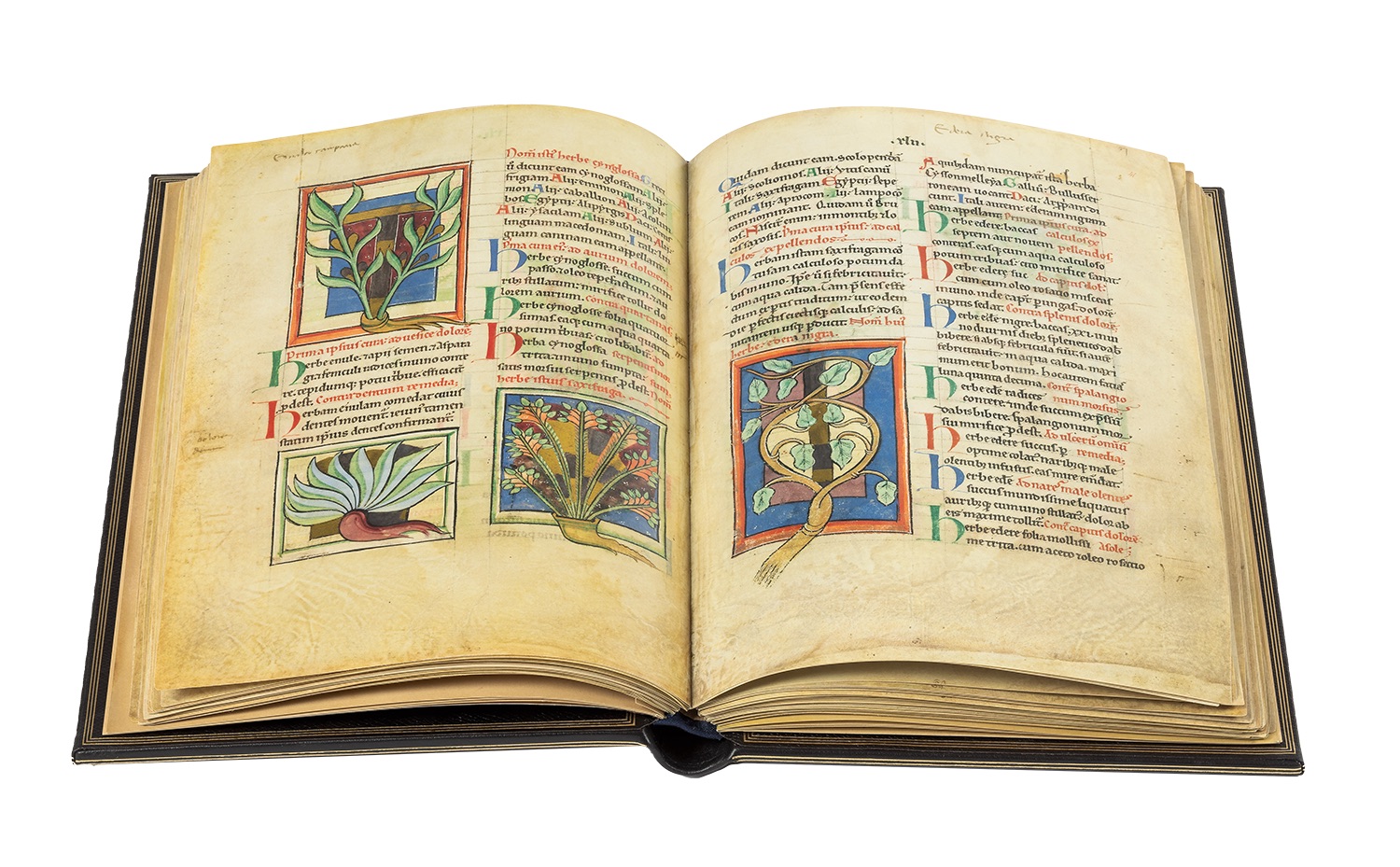
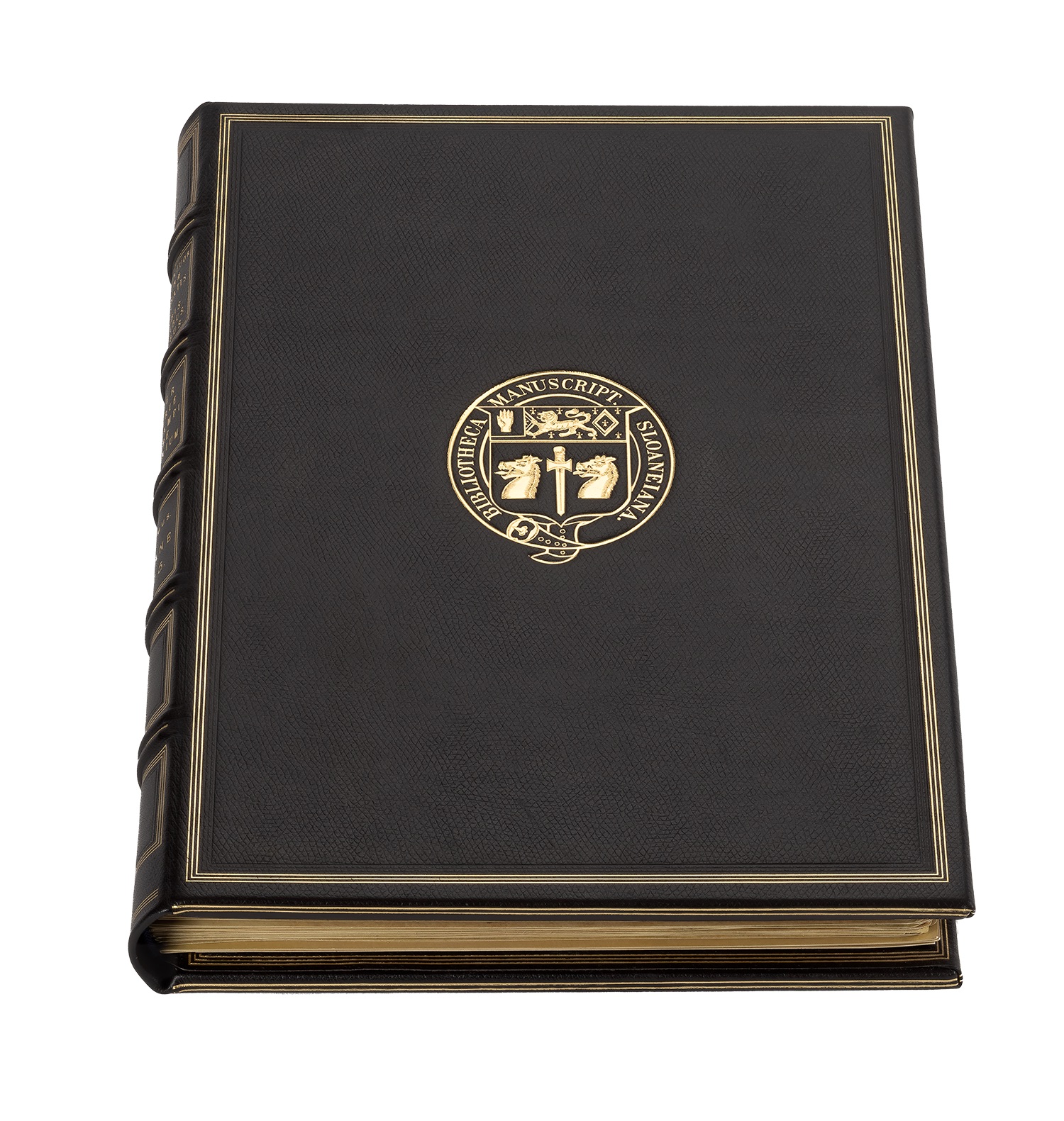
![Sloane_080v_Doku_Werbung A fine art single page from the facsimile About Plants and Animals. It shows folio 80v with leo - lion; leena [leaena] - lioness; taurus - bull.](https://www.muellerundschindler.com/wp-content/uploads/2023/10/Sloane_080v_Doku_Werbung.jpg)
